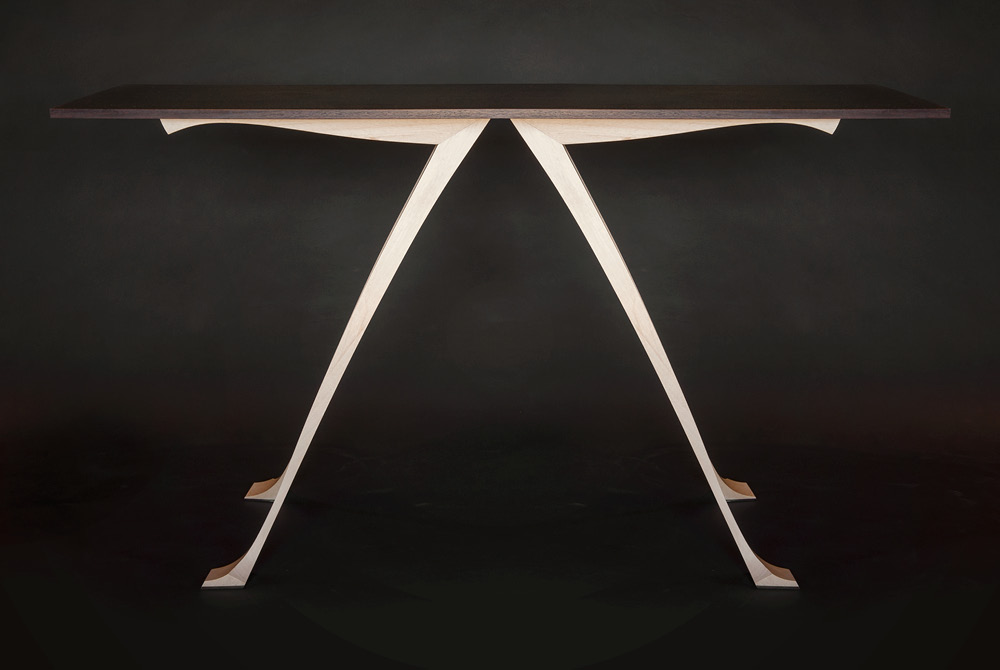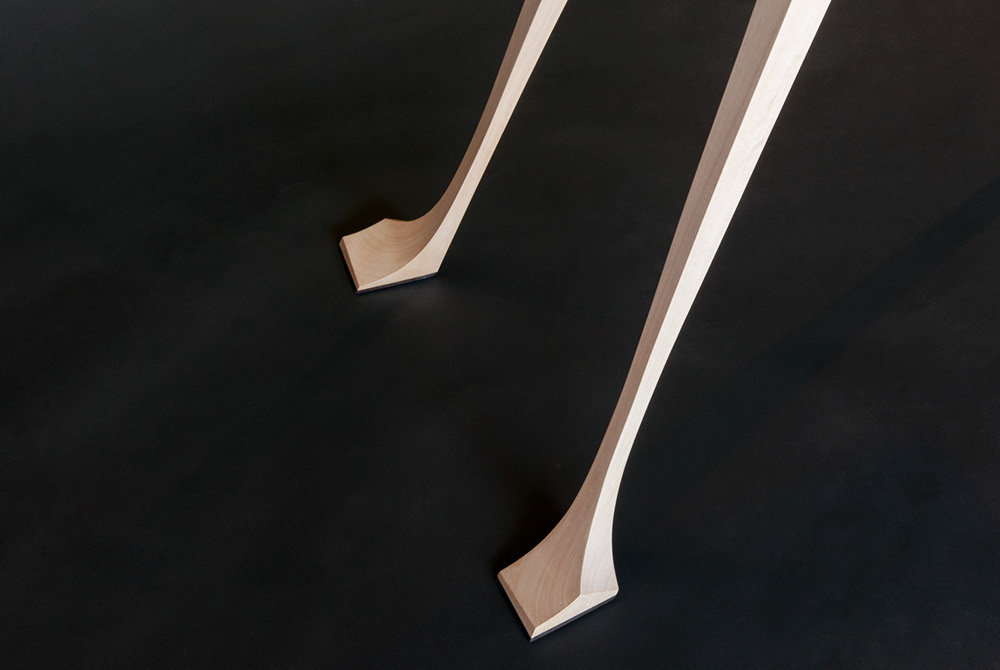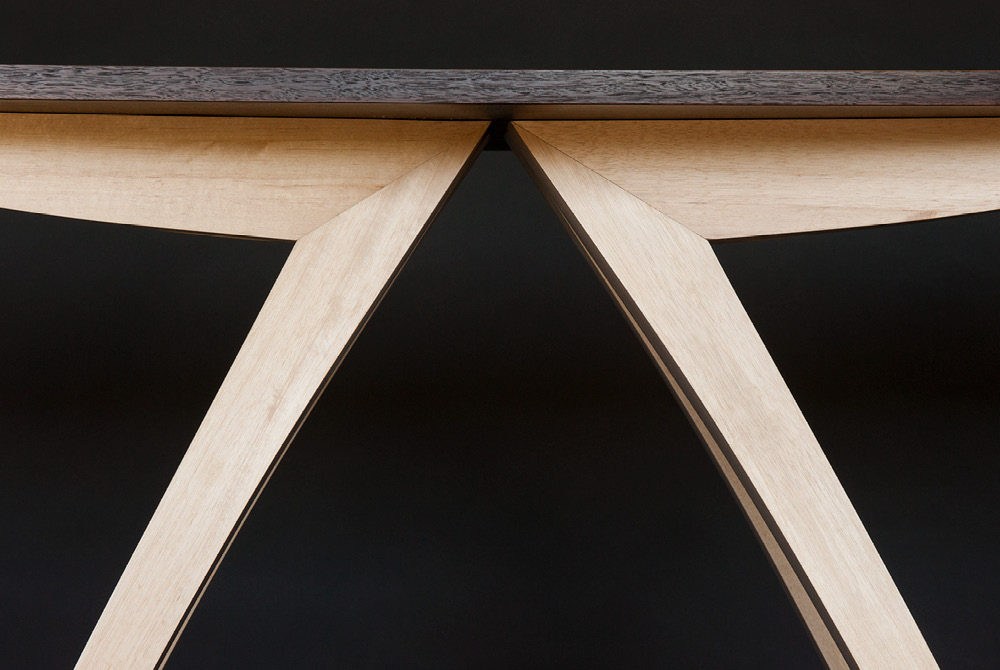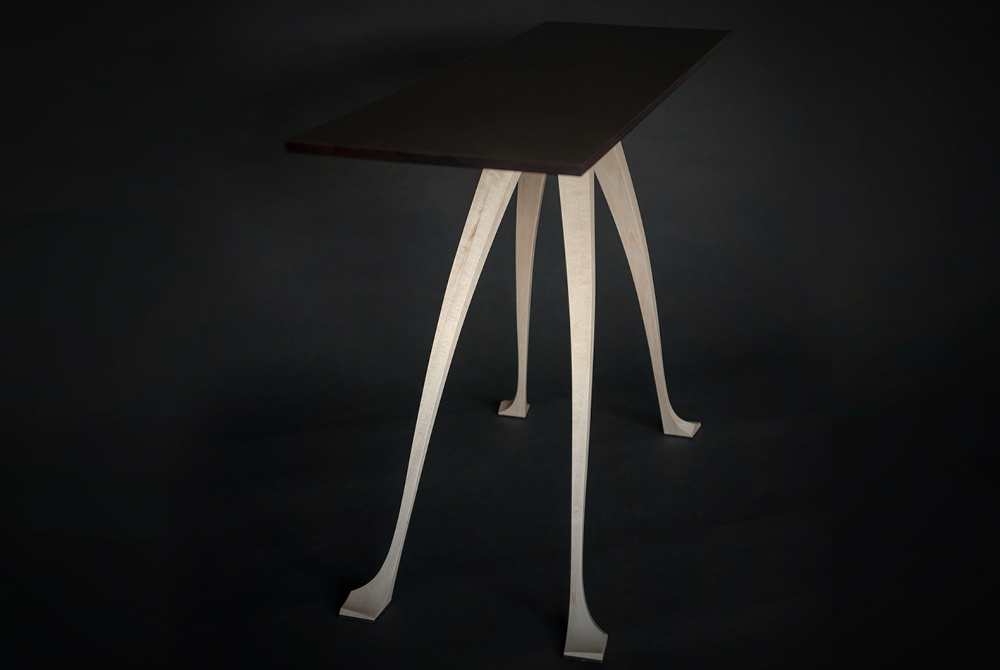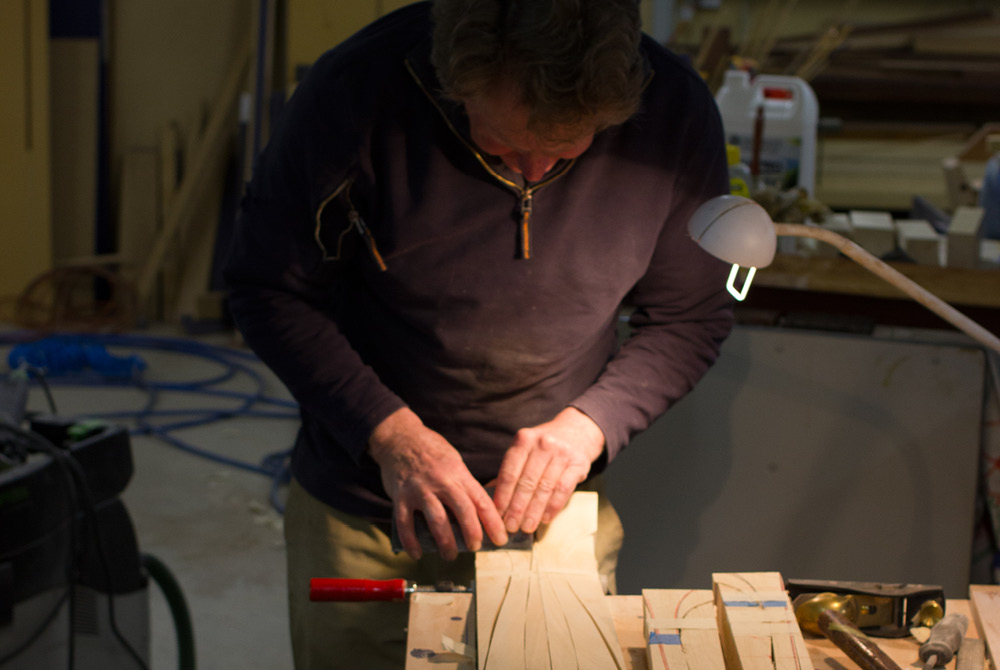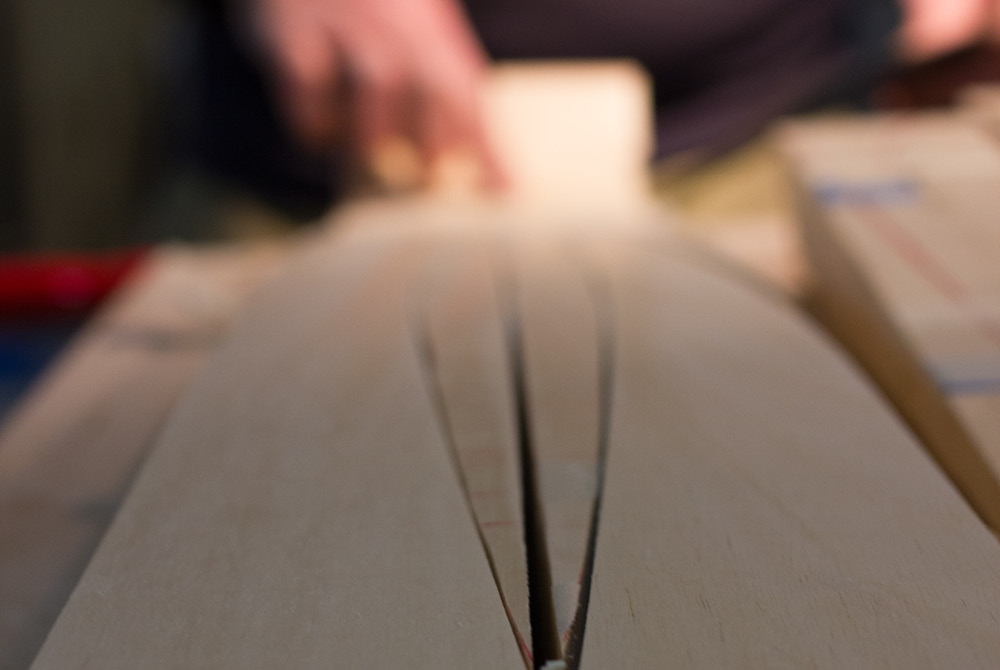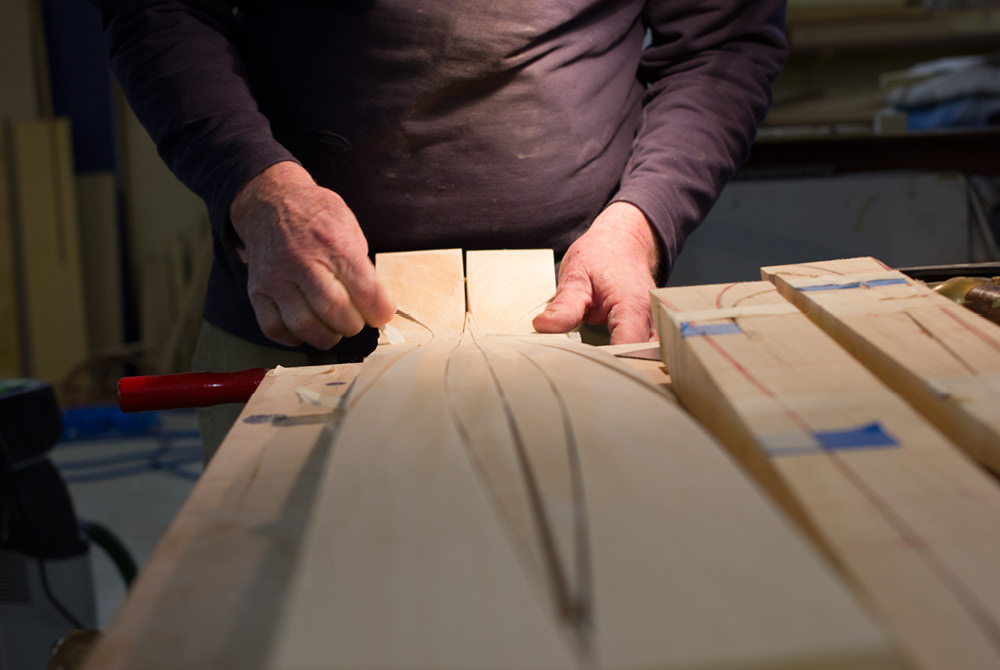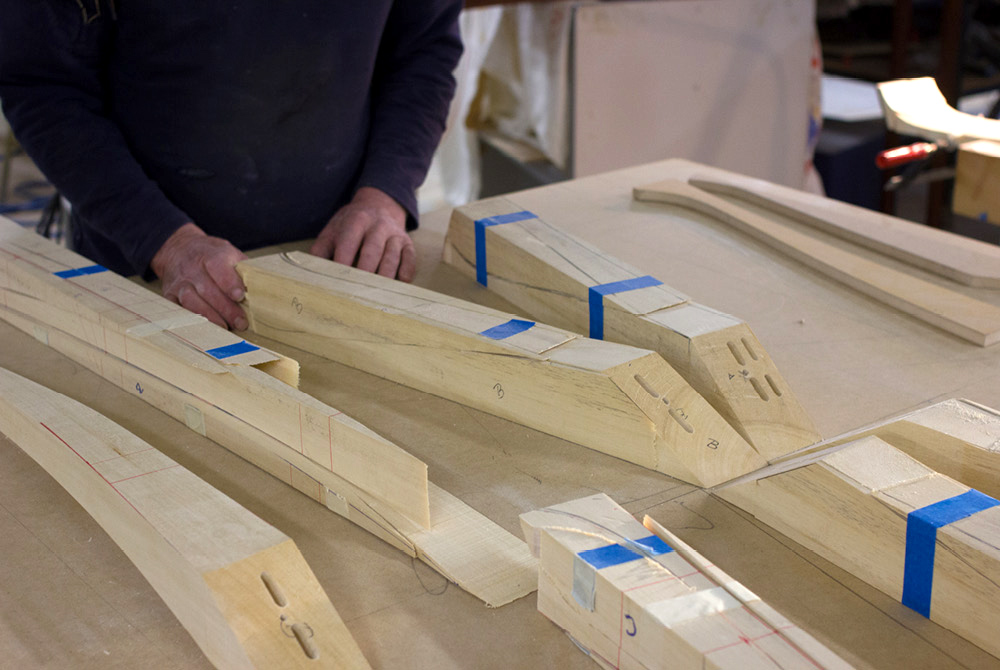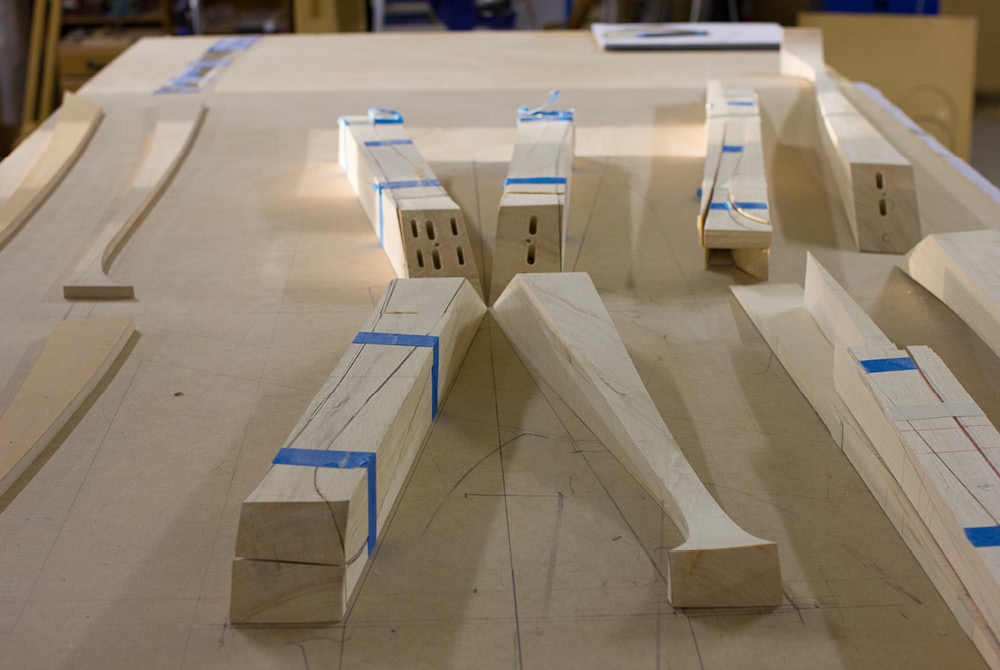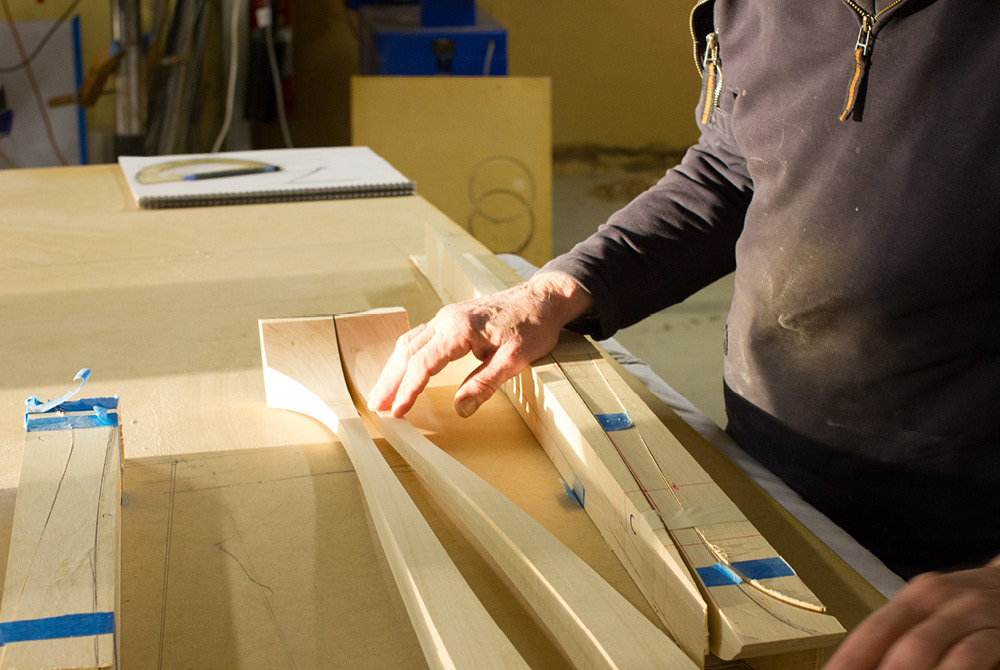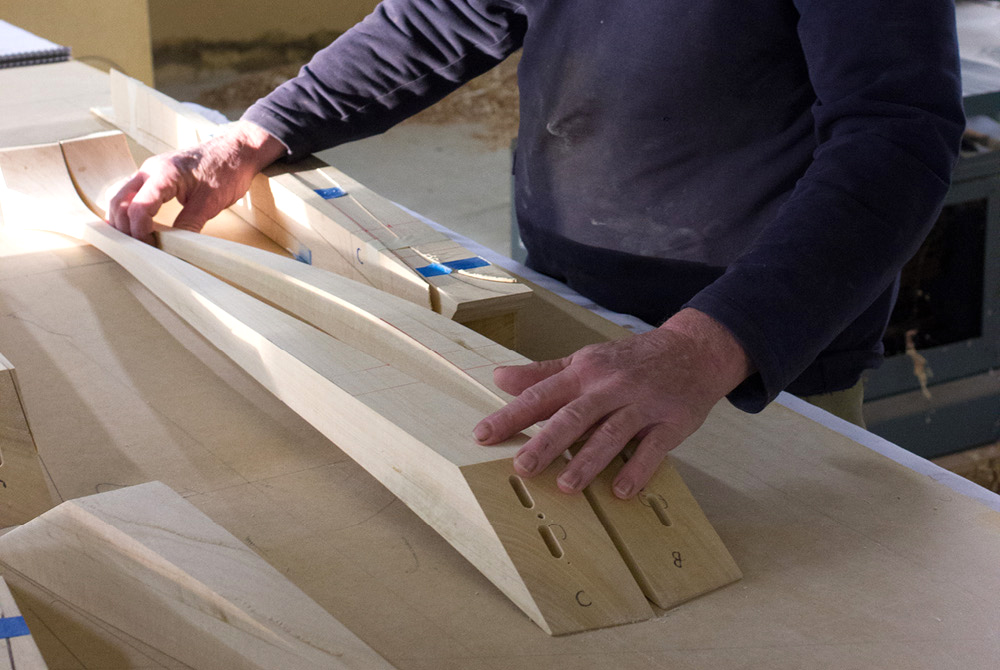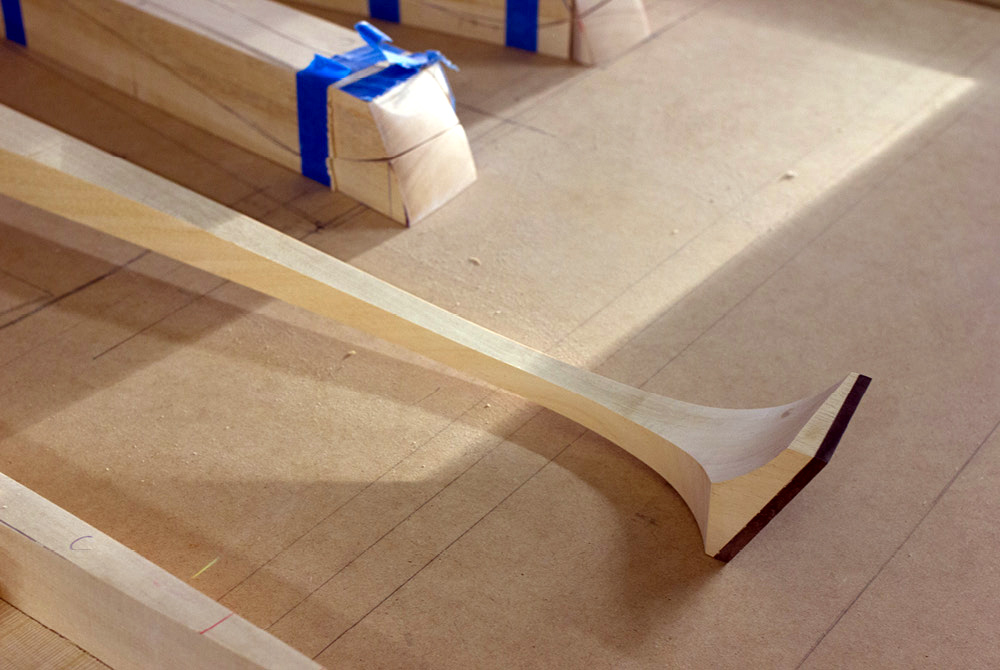Silver Ash, ebonised Jarrah, West African Ebony
1500W x 430D x 890H mm
Concept
My recent work has been an excursion into a realm of furniture history and structure. Leda (2008) and the Tables with Shoes series (2010) significantly influenced the design of Chrysalis.
The structural form of Leda was derived by reducing the seat of a Windsor style chair to a cylinder, with “spokes” radiating from the cylinder for legs and back, resulting in a chair-like sculptural form. The legs and back are square sectioned and “clasp” to the cylinder and diminish over a continuous convex arc.
The Tables with Shoes series is a playful take on the Cabriole ball and claw foot tradition. It was amusing to create stiletto shoes and high boots attached to straight lined, fine turned legs. The shoes are removable, and can be replaced by animal-like claws.
Chrysalis is a merging of these two pieces. Again, the legs are square sectioned diminishing over length. From the end view the legs have a continuous arc curve similar to Leda. From the side view the legs have a cabriole convex and concave curve, ending in a simple pad foot.
Next
My first enthusiasm for woodworking came suddenly and emphatically when I discovered the furniture of George Nakashima through his book, Soul of A Tree. I was living in Manhattan at the time, and discovered a gallery called Impressions in Wood within two blocks of where I was living. This gallery glowed in the evening with sensuous furniture and objects in Walnut and Zebrawood. Soon I was working alongside six to seven other young like-minded men and women in the basement of that gallery making furniture and objects inspired by Nakashima.
I would like to re-visit the more simple origins of my making. I ask myself, how can I make a simple table that does not emulate the well-worn solutions posed by tradition and manufacturing. How can it be different, yet simple, with an economy of moves, and have the appeal of the hand made?

